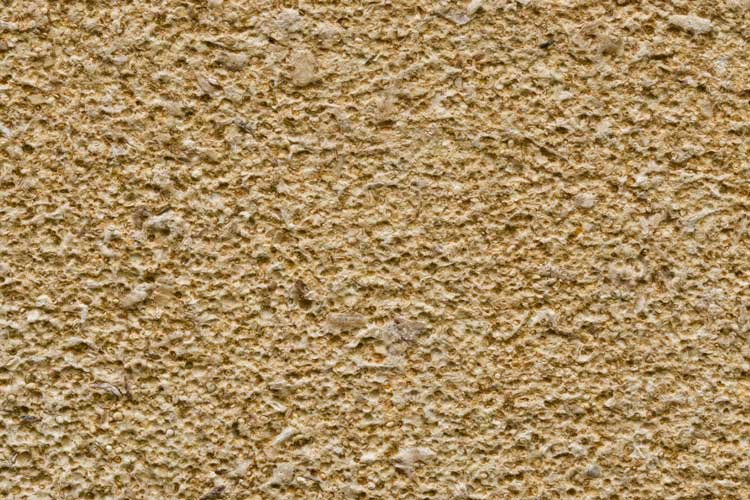Basics
Geology: oolitic limestone
Rock unit: Coombe Down Oolite Member
Age: Middle Jurassic
Provenance: near Corsham, Wiltshire
Where to see examples

Description
Bath Stone has become one of the most well known of the English Jurassic building stones and has been extracted from a number of quarries around Bath since Roman times. Bath Stone varies only slightly in character from quarry to quarry; each having its own name, although all are often described under the generic term of Bath Stone. At the cathedral, after the Second World War, the variety called Box Ground Stone (named from Box Hill where it was quarried) has been used for the re-facing of the south-west porch, the Bell Harry Tower and the Great Cloister as well as for a number of less major repair works between 1949 and 1971.
The Cathedral Archives and Library, built to replace the structure completely destroyed in the air raid of 1942, is a good place to see the stone. Opened in June 1954 the library still retains in places its rich, golden iron-rich colour; in part a result of its rain sheltered location to the north of the cathedral. The strength of the stone comes from the crystalline calcite cement. If you look closely at the stone you can see an Aero chocolate bar-like texture where small spherical balls of calcium carbonate called ooliths have popped out leaving behind the surrounding concave-shaped cement.
Bath Stone can sometimes be identified by the vertical calcite veins – known as “watermarks” to the quarrymen – which can be seen meandering down several ashlar limestone blocks. Watermarks are also sometimes referred to as “shakes” or “snail creep”.
Most of the Box Ground Stone has been mined from underground. One bottle-shaped chamber, 30 metres in depth, was known as the Cathedral Quarry. It would have been fitting for the stone to be removed from one cathedral only to find a home in another at Canterbury, but unfortunately this is unlikely, as the chamber was abandoned in the mid-1850s. Many buildings in and around Bath have been built from Box Ground and the stone has also been used at Lacock Abbey and, more recently, Apsley House in London.
Before the eighteenth century Box Ground Stone would be taken by wagon to Bath and then on to the port of Bristol by barge. But Box Ground Stone, like all Bath Stones, rose to ascendancy in Britain when first the canals and later the Great Western Railway opened up new transportation routes. Stone extraction in the Box Hill area gained further momentum with the opening of an underground mineral line, which allowed wagons to use a downhill gravity system to transport the stone. By 1864 100,000 tons of stone a year was leaving the district.
